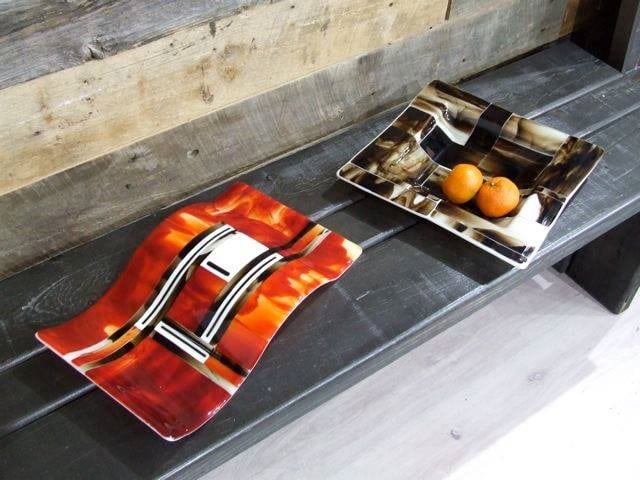Stained glass and glass fusion: More than just decoration
Discover our selection of glass for stained glass and fusing
A fashionable wave in modern design was the use of fusion. The decorative elements made by this technique, amaze by its beauty.
It is not always easy to find one’s way through the vastness of colors, marks, degrees of opacity and textures of glass, especially when you are new to stained glass or fusing. Between the heart’s desire and the reason, it is sometimes complicated to make a decision.
Here are our tips to guide you through this world that can be a bit confusing when you are a beginner but so exciting!
- Textures
- Opacities and colors
- Glass thicknesses

-
Textures
Textured glass is when one or both sides are not smooth. The most famous textured stained glass is the so-called cathedral glass: its surface is said to be “hammered”, it presents hollows and bumps in a homogeneous way.
In general, light passes easily through textured lenses and their structure offers the advantage of “blurring” what is going on behind.
Each glass manufacturer has its own range of textured glass.
There are also “printed” glasses. Regardless of their color, they are marked with a pattern during their manufacture. These glasses are smooth on one side and printed on the other side.
-
The colors and opacities of glass
The opacity of glass
Translucent glass, whether colored or not, lets light pass through its mass
On the contrary, an opalescent glass will block a little more or totally the light, so you will only see shadows through it.
Semi-opalescent lenses are therefore lenses that have a mixture of translucent and opalescent colors.
The colors
Part of the cost of glass is determined by the products and oxides used to create the color. Thus, warm colors such as red, yellow or orange are colors that you will find a little more expensive than colorless glasses.
-
Glass thicknesses
Sometimes a glass reference is available in different thicknesses. But why?
Generally speaking, the most commonly used thickness for a glass sheet is 3mm. You will also find thinner glasses which are most often used for the creation of jewelry or thicker glasses (over 4mm) often useful when you want to bring strength to your creation.
This is the case, for example, in the production of thermoforming plates.
A glass with a textured surface or structure can play on the thickness. This is not a problem, just make sure you use a suitable copper tape (or lead profile), i.e. a little wider than the thickness of the glass.
For example, with highly textured glass do not use a 4mm wide copper strip, you will not have enough copper folded over the edges of the glass to ensure the strength of your soldering.
You can not do without glass fusion, if you want to see the interior of your home unusual, luxurious and extraordinarily comfortable.
Would you like to have a personalized creation of stained glass and rustic chic fusion?
At SGL Furniture everything is possible!
Thanks for reading! We hope this article has helped you!
To find out more about our products, contact us at 581-990-3635 or by e-mail at kassandra@meublessgl.com. We’ll be happy to advise you and, above all, create your project.
See you in our next article!


